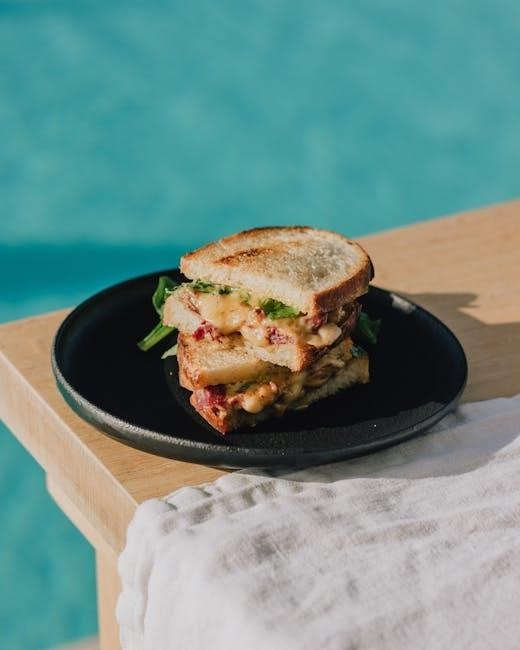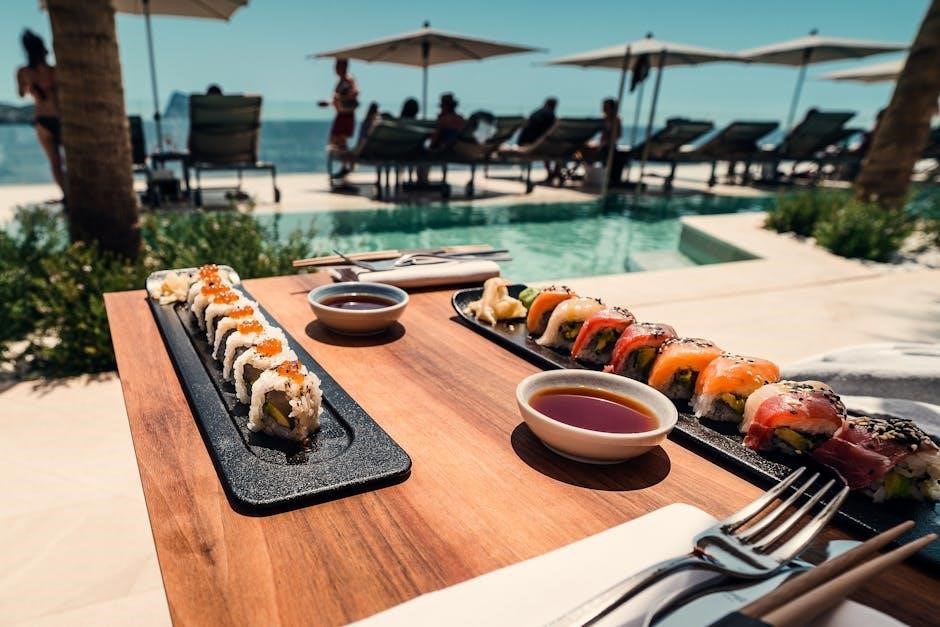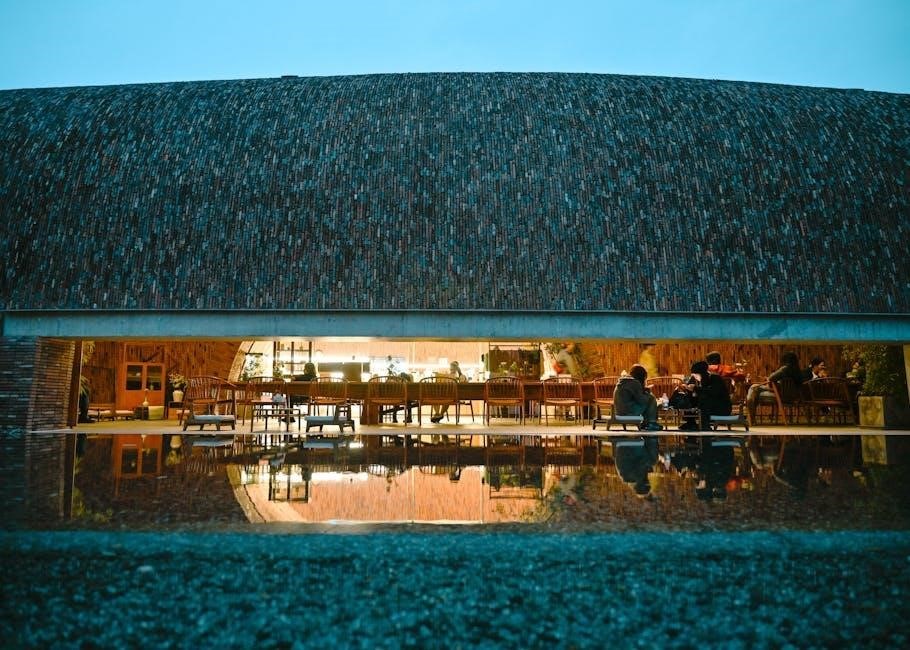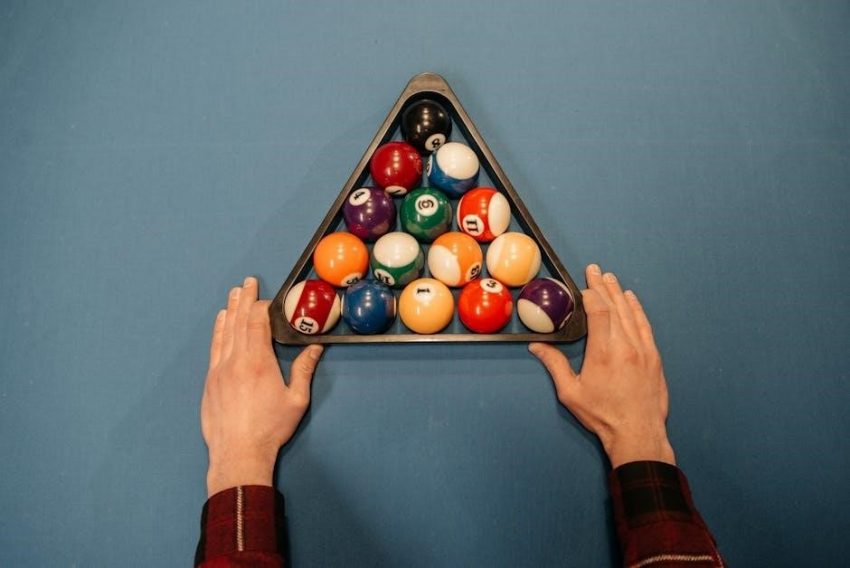Choosing the right pool table size is crucial for optimal gameplay and space utilization. This guide provides insights into standard dimensions and room requirements, helping you decide.
1.1 Importance of Choosing the Right Pool Table Size
Choosing the right pool table size is essential for enjoyable gameplay and efficient space utilization. A table that’s too large may not fit, while one that’s too small can hinder playability. Consider room dimensions, cue stick length, and player comfort to ensure optimal space. Proper sizing enhances safety and enjoyment, making it a critical decision for any game room. A well-fitted table ensures smooth gameplay and accessibility for all players, avoiding obstacles and providing a satisfying experience.
1.2 Overview of Pool Table Dimensions
Pool table dimensions vary, but standard sizes range from 7ft to 9ft in length and 3.5ft to 4.5ft in width. The minimum room size needed is approximately 3.43m x 4.42m to accommodate the table and cue sticks. Understanding these measurements ensures proper fit and gameplay. Tables for tournaments and home use differ slightly, with official sizes being larger. Additionally, snooker tables are typically bigger than pool tables. This overview provides a foundation for selecting the right size based on space and intended use, ensuring a smooth gaming experience for players of all skill levels.

Standard Pool Table Dimensions
Standard pool tables range from 7ft to 9ft in length and 3.5ft to 4.5ft in width, offering versatility for home and tournament play.
2.1 Common Pool Table Sizes for Home Use

For home use, the most common pool table sizes are 7ft (2.13m) and 8ft (2.44m) in length, with widths ranging from 3.5ft to 4ft (1.07m to 1.22m). These dimensions provide ample playing space while fitting into average-sized rooms. A minimum room size of 11ft 6in x 14ft 6in (3.51m x 4.42m) is recommended for a 7ft table, ensuring comfortable cue movement. Larger tables, like 9ft (2.74m), are often used in tournaments but may require more space. Measure your room carefully to avoid tight fits and ensure smooth gameplay.
2.2 Official Pool Table Sizes for Tournaments
Official tournament pool tables typically measure 4.5ft x 9ft (1.37m x 2.74m), providing a larger playing surface for professional-level gameplay. These tables are designed for precision and consistency, ensuring fair competition. The size accommodates longer cue sticks and allows for more strategic play. Minimum room dimensions for such tables are larger, often requiring at least 13ft x 16ft (3.96m x 4.88m) to ensure players have ample space to maneuver comfortably during matches.
2.3 Difference Between Pool and Snooker Table Sizes
Pool and snooker tables differ significantly in size. Pool tables typically range from 7ft to 9ft in length, while snooker tables are larger, measuring 10ft to 12ft. The larger size of snooker tables requires more space and can impact room layout. Additionally, snooker tables have smaller pockets, making gameplay more challenging. Standard pool tables are more compact, suitable for home use, whereas snooker tables are designed for professional settings. Understanding these differences helps in choosing the right table for your needs.

Room Size Requirements for Pool Tables
Ensure your room meets minimum dimensions for a pool table, considering table size and additional space for cue sticks. Measure carefully to avoid overcrowding the playing area.
3.1 Minimum Room Dimensions for a Pool Table
The minimum room size for a pool table depends on its length and width. For a standard 7-foot table, the room should be at least 13 by 16 feet. Larger tables, like 8 or 9 feet, require more space—15 by 18 feet or 16 by 20 feet, respectively. These dimensions ensure players have enough clearance to maneuver cue sticks comfortably without obstruction. Proper measurement is essential to prevent overcrowding and ensure smooth gameplay.
3.2 Additional Space Needed for Cue Sticks
Besides the table itself, cue sticks require extra space. Standard cues are 57-58 inches long, so players need at least 5 feet of clearance behind each end. This ensures comfortable shooting without obstruction. Measure the room to include this additional space, ensuring smooth gameplay for all players. Properly accounting for cue stick length prevents crowded conditions and enhances overall playing experience. Always consider this when planning your pool table setup to avoid any inconvenience during play.
3.3 Recommended Room Layout for Pool Tables
A rectangular room is ideal for pool tables, as it mirrors the table’s shape. Place the table centrally to ensure even clearance on all sides. Allow at least 5 feet of space behind each end for cue sticks and additional 1-2 feet for comfort. Position lighting above the table for optimal visibility. Keep the surrounding area free of furniture or obstacles to prevent interference. Ensure doors and pathways don’t infringe on the play area. A well-planned layout enhances gameplay and safety, making your pool table a focal point of entertainment.
Factors to Consider When Choosing a Pool Table Size
Assessing space, budget, and usage frequency are key when selecting a pool table size. These factors ensure the table fits both your room and lifestyle perfectly, enhancing enjoyment and functionality.
4.1 Assessing Your Available Space
Accurately measuring your room is essential to determine the ideal pool table size. Ensure there’s enough clearance around the table for comfortable play and movement. Consider the table’s length, width, and the space needed for cue sticks. A minimum room size of 3.43m x 4.42m is recommended for standard tables, but larger rooms may accommodate bigger tables or longer cues. Always measure doorways and hallways to ensure the table fits during delivery and setup.
4.2 Number of Players and Usage Frequency
The number of players and how often the table is used significantly impact the ideal size. For casual play with few players, a smaller table may suffice; However, frequent use or larger groups require more space to avoid congestion. A larger table or additional room for movement ensures a better experience. Consider the table’s size relative to the number of players to maintain comfort and gameplay quality, especially for regular use or competitive settings.
4.3 Budget and Table Quality
Your budget significantly influences the size and quality of the pool table you can choose. Larger tables made from premium materials are more expensive but offer better durability and playability. Consider your budget alongside your space and usage needs to find the right balance. While smaller tables are more affordable, they may lack the features of higher-end models. Investing in a table that fits your budget ensures long-term satisfaction and optimal performance for your gaming needs.

Types of Pool Tables and Their Sizes
Pool tables come in various types, including home, commercial, and specialty tables, each catering to different needs and spaces with unique size options.
5.1 Home Pool Tables
Home pool tables are designed for residential use, offering compact sizes to fit various spaces. Common sizes include 7ft, 8ft, and 9ft tables, with 8ft being the most popular for home use. These tables are ideal for casual play and family entertainment, often featuring durable materials and classic designs. They provide a perfect balance between functionality and aesthetics, ensuring enjoyable gameplay without requiring excessive space.
5.2 Commercial Pool Tables
Commercial pool tables are designed for heavy-duty use in bars, clubs, and public venues. They typically measure 9ft in length, offering a professional playing experience. Built with sturdy materials, these tables are designed to withstand frequent use and maintain their performance. Commercial tables often feature reinforced frames and high-quality cloth for durability. Their larger size requires ample space, making them ideal for spacious environments where pool is a primary activity. Regular maintenance is essential to ensure optimal playability and longevity in high-traffic settings.
5.3 Specialty Pool Tables
Specialty pool tables offer unique designs and features for specific needs. They include combination tables that convert into dining or ping-pong surfaces and outdoor tables built with weather-resistant materials. Some tables are designed for small spaces, like wall-mounted or folding models, while others feature customizable finishes or novelty themes. These tables cater to diverse preferences, allowing owners to blend functionality with personal style. Whether for entertainment, versatility, or aesthetic appeal, specialty tables provide innovative solutions for unique settings and requirements.
Accessories and Their Impact on Table Size
Accessories like cue sticks, balls, and table covers influence space requirements. Ensure extra room for storage and movement, especially with larger tables or frequent use.
6.1 Pool Table Accessories Every Player Needs
Essential pool table accessories include cue sticks, balls, a table brush, and chalk. These items ensure smooth gameplay and maintain the table’s condition. Additionally, table covers protect the surface from dust when not in use. Having a cue stick rack keeps equipment organized, while ball racks help in setting up games quickly. Moreover, accessories like scoreboards and cue ball cleaners enhance the overall playing experience. Proper storage of these items requires additional space, which should be considered when planning the layout of your pool table area.
6.2 How Accessories Affect Playing Space
Pool table accessories, such as cue sticks, ball racks, and table covers, can influence the playing area. While essential for gameplay, these items require additional storage space, potentially reducing the available playing area. Cue sticks, for example, need to be placed within easy reach, often requiring wall racks or stands nearby. Similarly, ball holders and other equipment can occupy space around the table, affecting movement and gameplay. Proper organization and storage solutions are crucial to maintain an unobstructed playing environment, ensuring both functionality and accessibility for players.
Measuring your space accurately and choosing the right pool table size ensures optimal gameplay. Consider table dimensions, cue stick length, and accessory storage for a perfect setup.
7.1 Summary of Key Considerations
When selecting a pool table, measure your room accurately, considering table size, cue stick length, and player movement. Choose a size that fits your space and usage needs, ensuring optimal gameplay. For home use, 7-8 foot tables are ideal, while tournaments require larger, 9-10 foot tables. Account for additional space around the table for cues and accessories. Properly assessing your space and needs ensures a enjoyable and functional setup for years of play.
7.2 Measuring Your Space Accurately
Accurate measurements are essential to ensure your pool table fits perfectly. Measure your room’s length, width, and any obstructions. For a standard 4.5×9-foot table, the minimum room size is 3.43m x 4.42m. Add extra space for cue sticks and player movement, ideally 60cm around the table. Use a room size calculator to confirm dimensions. Double-check doorways and hallways to ensure the table can be moved in. Proper measurement prevents installation issues and guarantees a smooth gaming experience.

